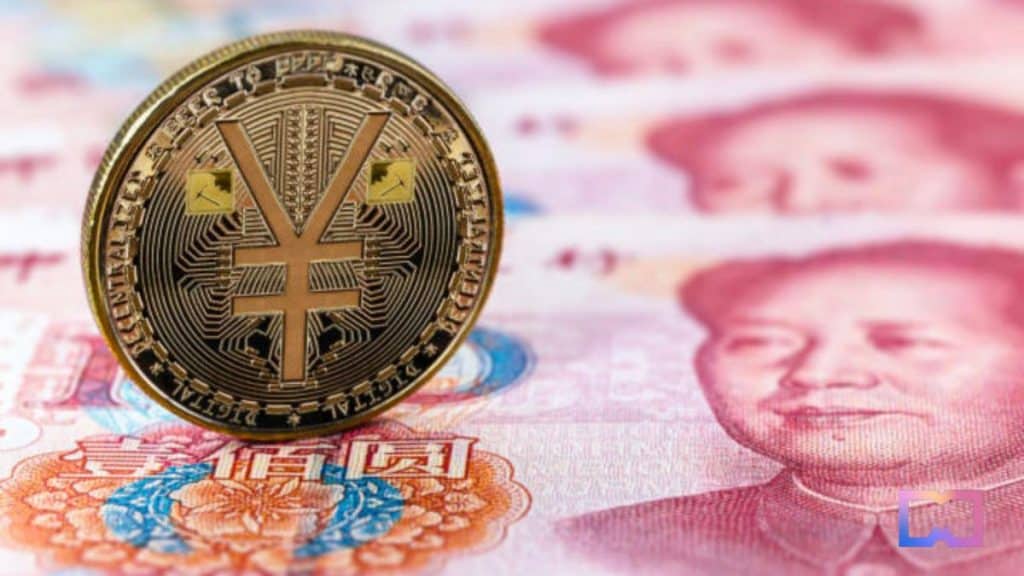Chinese Central Bank Hopes to Expand Digital Yuan Use with SIM Card CBDC Wallet


In Brief
The Chinese Central Bank hopes to expand the scope of the use of the digital yuan’s power and network-free payment functions by introducing a SIM card-based digital yuan hard wallet solution that allows users to pay with the CBDC with powered-down phones.
The People’s Bank of China (PBoC) has introduced an offline digital yuan wallet solution that relies on SIM cards, enabling users to transact with the Central Bank Digital Currency (CBDC) even when their phones are powered off.

The move to SIM card-based digital wallets marks a significant step in making digital transactions more accessible and efficient. Offline transactions have been a bottleneck in the adoption of digital currency, with network instability and unavailability often inhibiting transaction processes.
In addition, offline transactions provide an added layer of convenience and flexibility, especially in remote areas where network connectivity is often unreliable. This could result in increased adoption of CBDC in these areas, thus contributing to the broader goal of digital financial inclusion.
Furthermore, enabling offline transactions may also enhance the security of digital transactions. Because offline wallets are not connected to the internet, they face a lower risk of cyber attacks. This could instil greater confidence in users and prompt wider adoption.
China smartphone sales declined 8% YoY during the 618 period in 2023, amid macroeconomic headwinds. vivo and Apple led in sales, Huawei grew fastest.
— Ravyansh Yadav (@ravyansh_yadav) July 6, 2023
Accordingly, our forecast for China’s smartphone market has been revised downwards.#smartphones #china #apple #vivo #Huawei #tech pic.twitter.com/K7sbIhorpy
What Next for the Digital Yuan?
The introduction of the SIM card-based hard wallet comes as part of China’s wider push to digitise its currency, with the digital yuan being at the forefront of these efforts.
The PBoC has been leading the charge among central banks worldwide in the creation of a national digital currency. Known as DCEP (Digital Currency Electronic Payment), the digital yuan project has been under development for a number of years. Trials of this project have taken place in diverse cities throughout China.
Although the PBoC hasn’t given an official date for a complete rollout, they are clearly leading efforts to foster widespread adoption of the digital yuan. The SIM card wallet is another step towards achieving this goal and will undoubtedly have implications for the future of currency, not just in China but potentially worldwide.
Today is #ChinaNationalMaritimeDay. In Beihai, China Mobile Guangxi has completed the construction of more than 30 sea-covering base stations. The #5G network coverage has been extended to about 67 kilometers from Weizhou Island. pic.twitter.com/VLtesFJvc9
— China Mobile Guangxi (@ChinamobileGX) July 11, 2023
Global Implications
Central banks globally are paying close attention to China’s efforts to digitize its currency. The success of China’s digital yuan could motivate other nations to expedite their own CBDC projects. As such, the progress of the digital yuan will have implications for global monetary policy and the future of money.
The shift towards digital currencies also raises questions about their impact on traditional banking systems and the broader financial landscape. As more and more transactions become digital, it will necessitate a paradigm shift in the way we approach and understand money. The potential for a fully digitised currency could also challenge the supremacy of traditional fiat currencies, marking a significant change in global economics.
As we look to the future, it is clear that the development of digital currencies, as exemplified by China’s digital yuan, will shape the future of financial transactions and have far-reaching implications. The world will be watching closely as China continues to pioneer this digital frontier.
- Chainwire and China Telecom are partnering to bring Blockchain SIM cards to the market, which will be the largest blockchain hardware product ever seen globally.
Read more related articles:
- China’s “Instagram” chooses Conflux Network for permissionless blockchain integration
- The Brazilian Central Bank Can Regulate Crypto
- Digital Yuan: Chinese CBDC Set to Revolutionize Securities Market
Disclaimer
In line with the Trust Project guidelines, please note that the information provided on this page is not intended to be and should not be interpreted as legal, tax, investment, financial, or any other form of advice. It is important to only invest what you can afford to lose and to seek independent financial advice if you have any doubts. For further information, we suggest referring to the terms and conditions as well as the help and support pages provided by the issuer or advertiser. MetaversePost is committed to accurate, unbiased reporting, but market conditions are subject to change without notice.
About The Author
Nik is an accomplished analyst and writer at Metaverse Post, specializing in delivering cutting-edge insights into the fast-paced world of technology, with a particular emphasis on AI/ML, XR, VR, on-chain analytics, and blockchain development. His articles engage and inform a diverse audience, helping them stay ahead of the technological curve. Possessing a Master's degree in Economics and Management, Nik has a solid grasp of the nuances of the business world and its intersection with emergent technologies.
More articles

Nik is an accomplished analyst and writer at Metaverse Post, specializing in delivering cutting-edge insights into the fast-paced world of technology, with a particular emphasis on AI/ML, XR, VR, on-chain analytics, and blockchain development. His articles engage and inform a diverse audience, helping them stay ahead of the technological curve. Possessing a Master's degree in Economics and Management, Nik has a solid grasp of the nuances of the business world and its intersection with emergent technologies.






















































